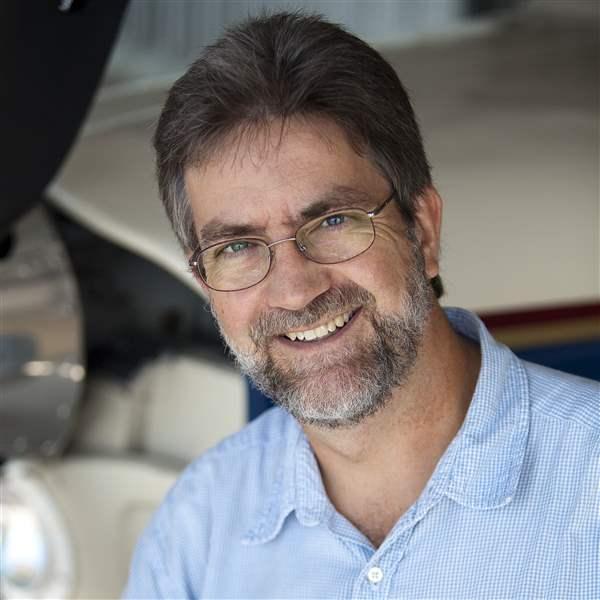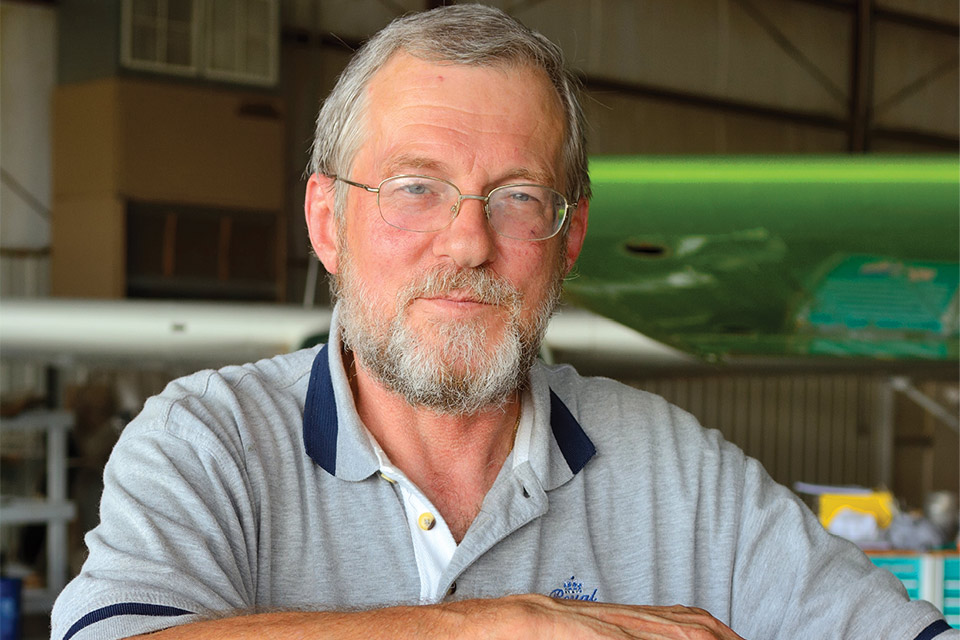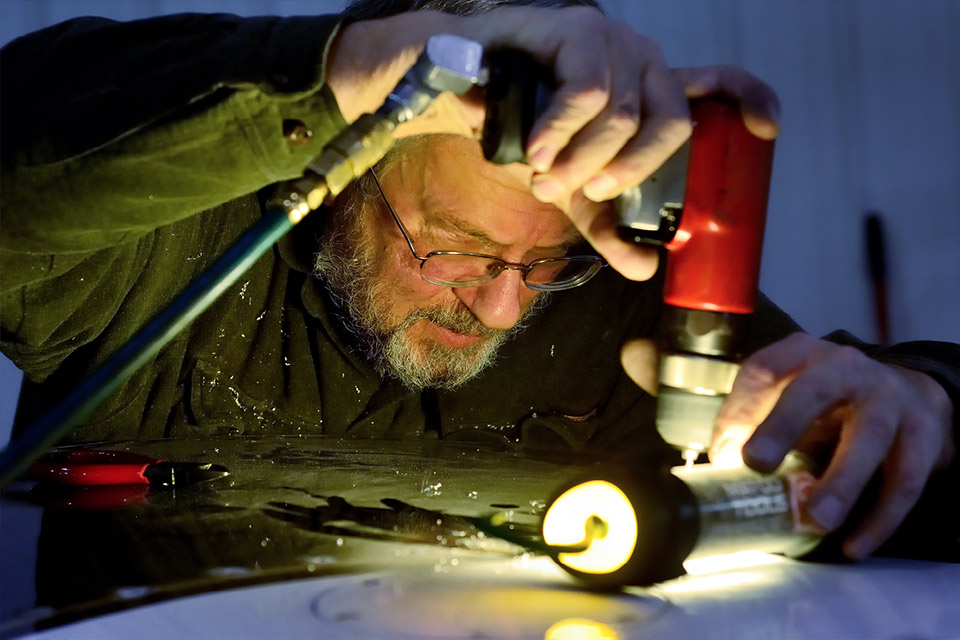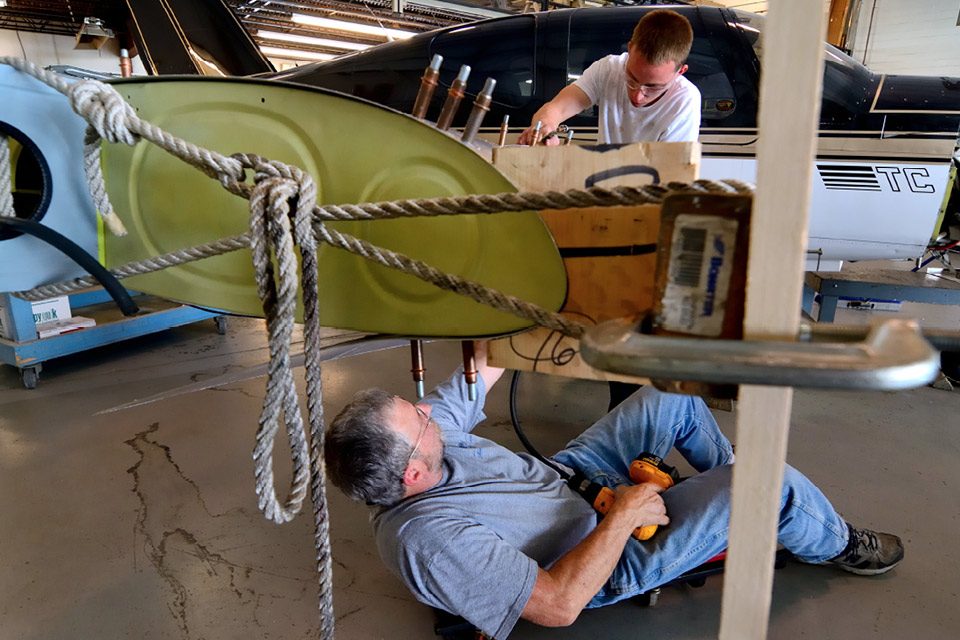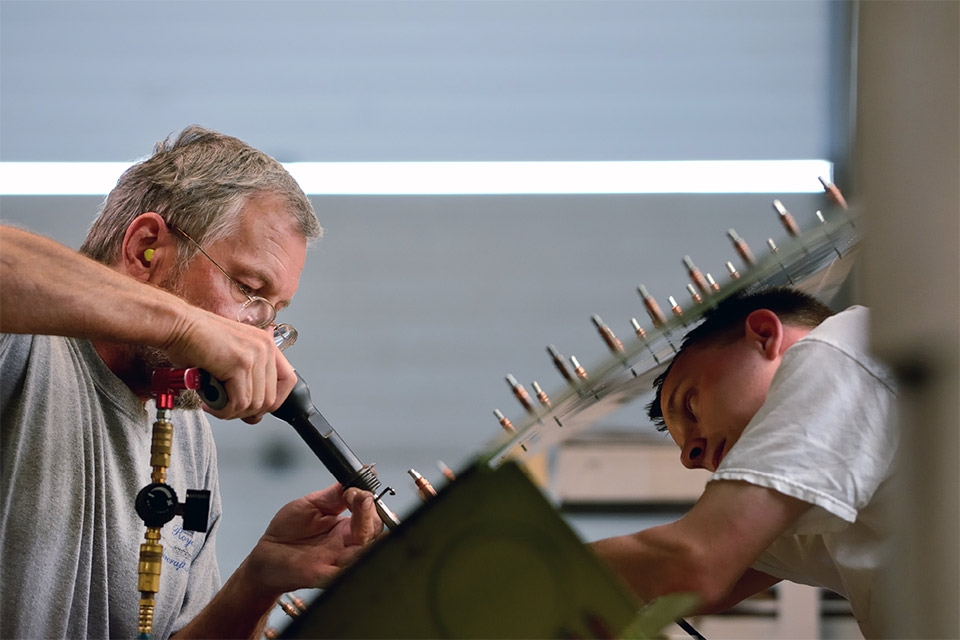Even with the main doors open, the low morning sun doesn’t quite reach the back left corner of Royal Aircraft Services’ maintenance hangar, where a Socata TB–21TC Trinidad has reposed for months. Beneath a thin patina of dust, she reigns as hangar queen.
Tom Young, lead mechanic on the project to rebuild the piston single’s right wing, has been an airframe and powerplant mechanic since 1976. He added his inspection authorization in 1980—the same year he earned his multiengine rating, and added instrument instructor privileges to his flight instructor certificate. Young has seen plenty of challenging projects since then—replacing countless firewalls on Cessna piston singles, and even building a Pitts S–1 from plans—but none as challenging as the Trinidad that landed at Royal’s Hagerstown (Maryland) Regional Airport-Richard A Henson Field hangar in December 2013.
Analytical disassembly
The airframe was described as having a severe left-wing-heavy condition. “I went out and flew it. It was indeed a very left-wing-heavy condition—to the point where after about 10 minutes of flying the airplane, my arms were getting tired,” Young said. Experience told him it was more than a rigging issue. “The problem was even worse when the flaps were down.”
Consulting the Socata service manual, which provides dimensional and angular checks, Young fabricated a rigging board, put a digital inclinometer on it, and started checking the angle of incidence of each wing. “I found that lo and behold, the right wing had a full degree more incidence at the tip than the left wing.”
The Trinidad was damaged in a 2004 accident. Young surmised that repairs were made without checking the angle of incidence as new wing skins were riveted into place. (The shop that repaired the accident damage is no longer in business.) The wing would have to be deskinned and reconstructed. The airplane was moved into the back corner of the hangar, and Young began the disassembly process.
This entailed more than just drilling out hundreds of rivets, however—throughout the process, he was looking for clues as to how the wing originally was put together, to guide him in the eventual reassembly. The service manual doesn’t provide step-by-step instructions for a project like this; Young and his co-workers were on their own.
One challenge with the project was that Socata uses a wet wing, in which fuel tank sealant is used to seal the junctions between structures inside the wing. There’s no rubber bladder or fuel cell to contain the fuel, as is the case with many other piston aircraft. And an excessive amount of sealant had been used when the wing was rebuilt. “The gas wasn’t going to leak through the front face of the spar,” he noted, yet a large swath of the spar was coated in sealant.
“We had to clean all that stuff off,” Young explained. Scraping off all the sealant—there’s no other way to remove it—was the most tedious part of the project, he said. All told, he spent a week scraping off sealant.
All about the angle
Young knew the left wing was within factory tolerances. “I was only interested in making the angle of incidence on the right wing match [that of] the left wing,” he explained. One challenge was holding the wing skins against the leading edges of the ribs, to maintain both the close tolerances required and the correct angle of incidence. He fabricated an adjustable jig that would contour to the wing’s leading edge—and checked the angle of incidence every step of the way. All told, he figures he measured that angle more than 300 times.
The Trinidad wing is comprised of three skins. Socata had an inboard skin available in Florida, and that was ordered. Royal found it more economical to fabricate the other two skins than to order them from France. Long drill bits and angle drills were used to drill from inside the wing structure, through the holes in the wing ribs and spar, and into the new skins to ensure exact rivet placement. Because Socata wings use flush rivets, Young then had to countersink all those new holes.
The project held one more surprise. Oversized rivets had been used on the ribs when the wing originally was put back together, expanding the holes in the ribs. To correct this, he fitted doublers to the affected ribs—another tedious process that added a week of labor to the project. (Installing doublers was more cost effective than buying new ribs and having them shipped from the factory.)
After consulting with Michael Kissel, maintenance shop manager—a frequent occurrence over the course of the project—Young decided to rivet the skins to the forward sections of the ribs, then mount them to the spar as one assembly. The wing skins and ribs were temporarily assembled in a jig using Cleco fasteners. The assembly was then attached to the wing—using still more Clecos—so the angle of incidence could be measured. It was spot on. Actual assembly could begin.
Home stretch
The wing assembly is installed and the angle measured a final time; the difference from left to right is less than one-one hundredth of a degree. The completed wing has none of the play—plus and minus 14 degrees!—evident before the skins were attached. “The wing has that much flexibility in it. The skins actually take all the twisting moments of the wing.”
But work isn’t done. The fuel tank must be tested, and three small seeps fixed. “When I flew the airplane, now we had a right-wing-heavy tendency—that was just what I wanted,” Young said. He had not removed existing aileron trim tab adjustments, “just in case there was any kind of issue going on.” A few tweaks and the Trinidad’s flying hands-off. He taxies the airplane to Royal’s paint shop next door.
Scheduling complex projects like this isn’t a problem in the nontraditional shop, Kissel said. “We’re a team. We’re basically working together to make the workload flow.” Extra hands were available when Young needed them, and he was reassigned to higher-priority projects. The Trinidad sat for weeks at a time while the crew completed other jobs, or waited for parts.
The maintenance facility was founded in December 2005, when Austin and Pamela Heffernan—and partner Gary Cotshott—bought the assets of an existing shop. While hangar queens are not sought, Royal does get a lot of jobs that other facilities don’t want to do, or lack the ability to undertake. “All of the insurance adjusters know us,” Austin Heffernan said. “Word of mouth is probably the main thing. We’re not the cheapest shop, because we do the job right.”
The Trinidad was released after eight months, and 406 man-hours—more than 240 of them Young’s. (In comparison, a Cessna 172 firewall replacement averages 100 to 150 hours, not including engine teardown and inspection—which Royal doesn’t do in house.) He’s not sure he wants to take on another project that complex. “Without a doubt, this has been one of the most intricate and complex repairs I’ve ever done in my entire career as a working mechanic.
“To me, it’s interesting to take something and make it right. My reward for doing a good job at working on airplanes is getting in the airplane and having it fly correctly. That, to me, is a wonderful feeling.”
Email [email protected]
See the video and hear Tom Young discuss the project.
